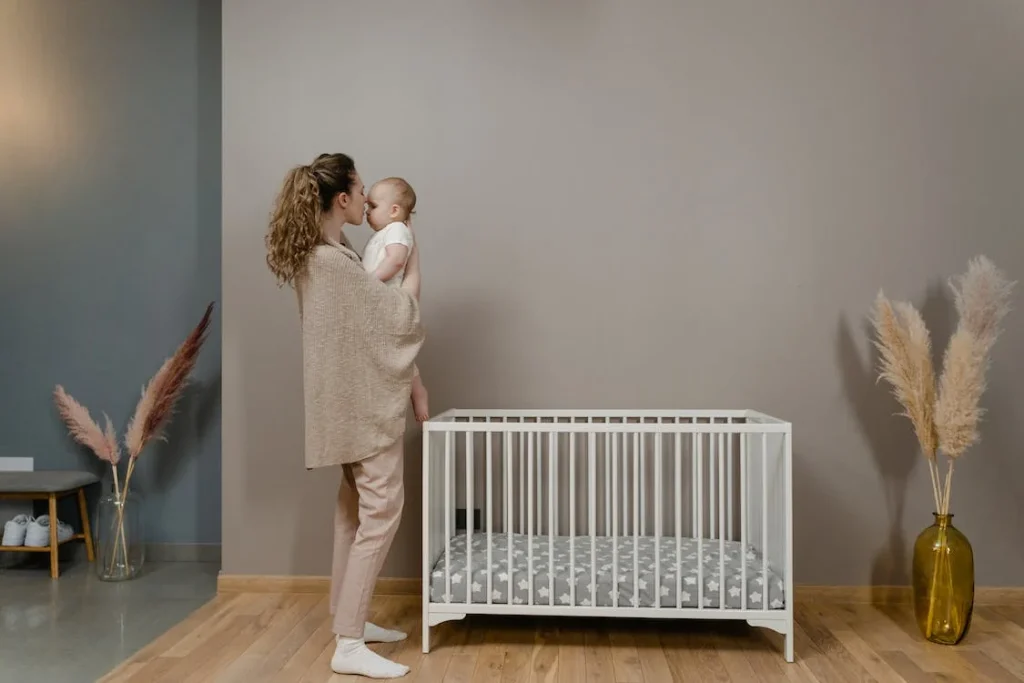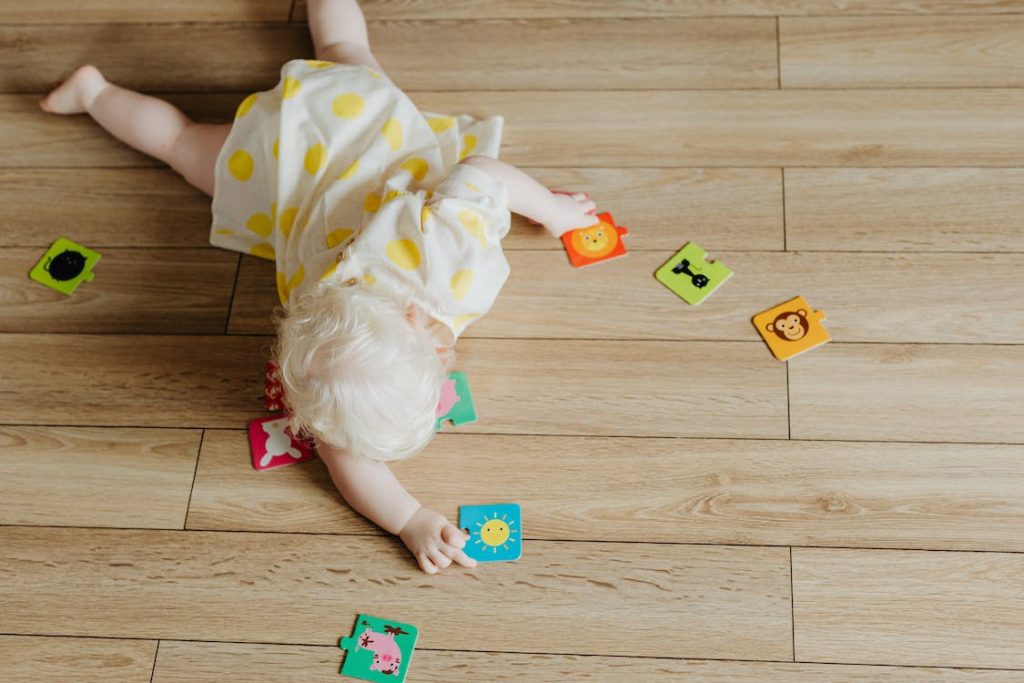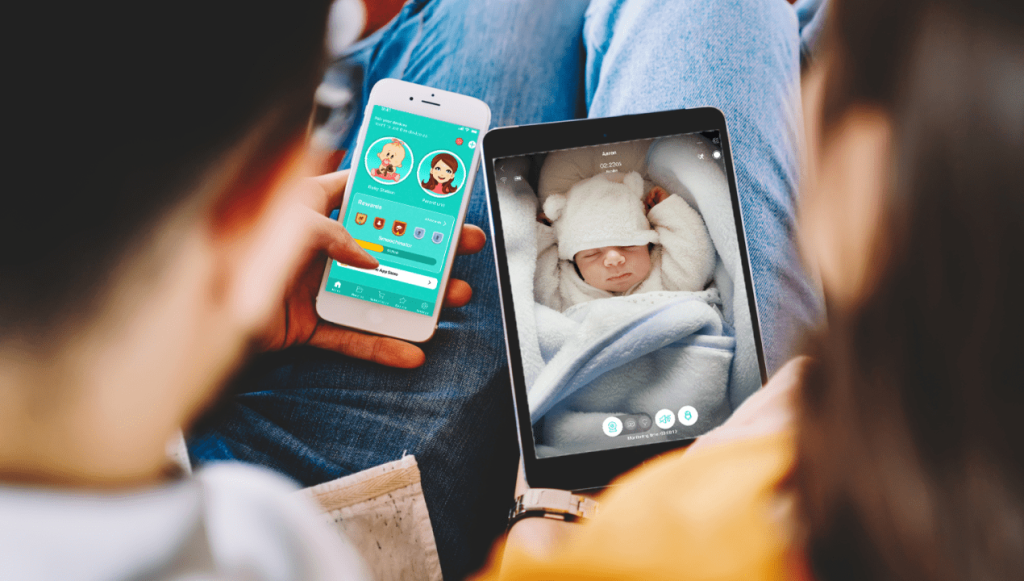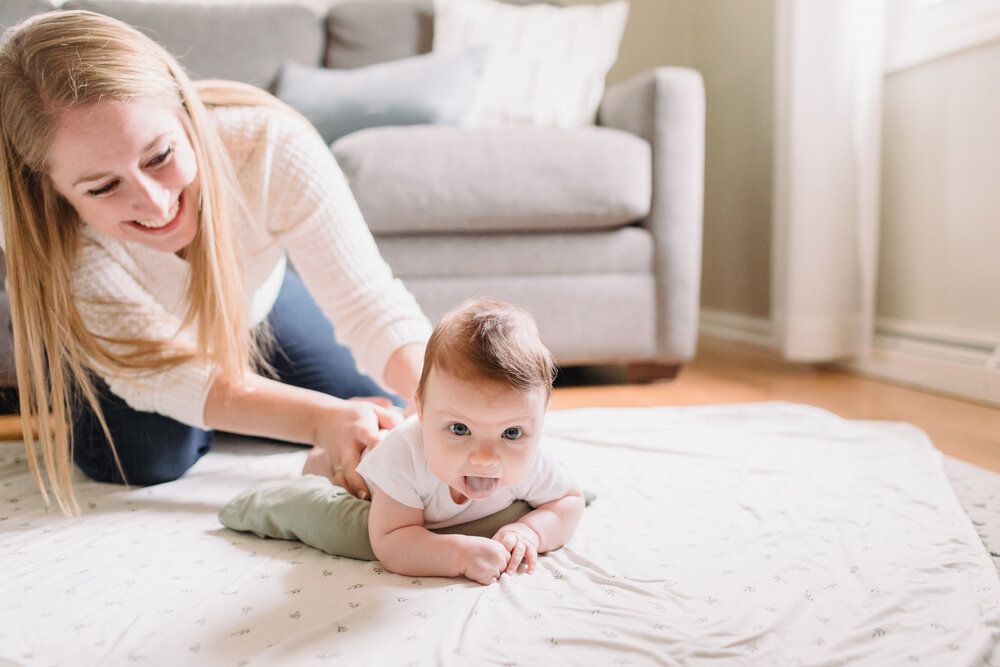
Newborns Roll to The Side While Sleeping: Everything You Need to Know About Newborns Curl
- Created:
18. 7. 2023 - Updated:
26. 7. 2023
First off:
Newborns are a joy to behold, and watching them sleep is priceless.
As a parent, it’s a fascinating sight to watch your newborn roll to their side in their sleep.
It makes one wonder:
Why do they engage in such acrobatics while sleeping peacefully? Also, is it safe?
Thus:
We’ll discuss some heartwarming facts about babies’ inclination to roll to their sides while sleeping, with tips on preventing this.
Ready?
Is it Normal for Newborns to Roll to the Side While Sleeping?
Yes, it is normal for newborns to roll while sleeping. Rolling usually develops around 4-6 months when babies gain muscle control. It’s a significant milestone in your baby’s growth and often a sign of healthy development. However, monitoring your newborn’s sleeping position and following safe sleep guidelines are crucial to reduce the risk of SIDS.
When Do Babies Start Rolling?
According to Pathways.org, most newborns start rolling over between 4 to 6 months of age. Medlineplus also emphasizes that newborns may start rolling from their stomachs to their backs or vice versa at 4 months old.
These early rolling experiences are often accompanied by giggling and joyous squeals.
Now:
Some little adventurers surprise us by rolling as early as 3 or 4 months. On the other hand, some babies take their time and don’t start rolling until they are closer to 6 months.
Nonetheless:
Note that every baby is unique and has their own timeline for mastering this skill.
Why Do Babies Roll While Sleeping?
Get this:
Rolling is a natural reflex and a significant milestone in the physical development of newborns. From early stages, newborns possess reflexes that help them turn their heads and move their bodies.
Therefore:
As they grow and gain control of their bodies, rolling becomes a thrilling way for them to navigate their environment.
What’s more?
Babies love to explore their surroundings even in their sleep. Rolling allows them to do this and also change into more comfortable positions.
Note:
As newborns roll, they strengthen their muscles and improve their coordination. This sets the stage for future developmental milestones like crawling and walking.
Is it Safe for Babies to Roll While Sleeping?
Yes, it is! Rolling is a natural part of a newborn’s development as they gain control over their movements.
By securing a safe sleeping space and closely monitoring your rolling baby, you can encourage their motor development while ensuring their well-being.
Now:
Let’s explore specific recommendations from the American Academy of Pediatrics (AAP) regarding safe sleep for newborns.
Note:
These recommendations are based on extensive research. Thus, they are reliable and intended to provide the safest sleep environment for newborns.
Let’s dive in!
- Babies should be placed to sleep on their backs; this reduces the risk of Sudden Infant Death Syndrome (SIDS).
- Use a crib, bassinet, or portable playpen with a firm and flat mattress. Avoid putting your baby to sleep on a couch, armchair or car safety seat (except while driving).
- Keep your baby’s sleep space free of soft items that can cause choking or suffocation. This includes items like decorative pillows, loose blankets, and stuffed animals.
- Avoid swaddling your baby. While swaddling might have its benefits, it is not fitting to swaddle your newborn once they’ve started rolling. The movement restriction increases the risk of SIDS.
Pro Tip:
Turn your baby to their back if they roll on their stomach while sleeping. While some babies may naturally prefer sleeping on their stomachs, prioritize their safety by consistently placing them on their backs.

How Can Parents Prevent Rolling-Related Accidents?
Rolling is an exciting milestone for babies, but parents must take preventive measures to ensure the safety of their newborns.
Remember:
Creating a safe sleep and play environment can help foster their exploration while minimizing the risk of rolling-related accidents.
Therefore:
Consider the following tips to ensure a safe environment for your rolling baby:
1. Use a Firm And Flat Crib Mattress
Listen:
Always place your baby on a firm sleep surface, like a crib mattress covered with a fitted sheet. Avoid using soft bedding, including pillows, blankets, or crib bumpers; they can increase the risk of suffocation.
Bottom line:
A flat mattress that fits snugly into the crib or bassinet reduces the risk of your baby getting trapped while rolling.

2. Position Your Baby Correctly
As discussed earlier:
The American Academy of Pediatrics (AAP) recommends placing your baby on their back for every sleep time—naps and nighttime sleep. Doing this has proven to significantly reduce the risk of SIDS in newborns.
In addition:
Sleeping on the back allows the baby’s airways to remain unobstructed and open. It also minimizes the likelihood of regurgitated milk or saliva pooling in the throat, thereby reducing the risk of choking.

3. Choose a Crib That Meets Safety Standards
In any case:
Always select a crib or playpen that strictly adheres to Federal safety guidelines.
For example:
The spacing between the crib’s slat must not exceed 2⅜ inches (about the width of a soda can). This prevents the baby’s head from getting trapped between the slats.
Also:
You should ensure that the crib has sturdy frames, properly installed screws, and corner posts that are shorter than 1/16 inch.

4. Transition to a Sleep Sack
Naturally:
When your baby starts rolling, it might be time to transition from traditional blankets to sleep sacks.
Why?
Sleep sacks are wearable blankets that keep your baby warm and safe without exposing them to the dangers of loose bedding.
You should opt for sleep sacks with adequate room for your baby’s hips to move freely. This will ensure comfort and promote healthy hip development.
Warning:
Don’t make use of sleep slacks that swaddle. Swaddling may hinder a baby’s progress in developing their motor skills and spatial awareness.

5. Create a Safe Play Area
Needless to say:
As your baby becomes more mobile, try to create a safe play area where they can practice their rolling skills.
How?
- Make use of soft mats or blankets on the floor to cushion potential falls. This helps protect your baby from bumps and bruises.
- Remove any hazardous objects or furniture that could pose a risk. Anchor heavy furniture and bookcases to the wall to prevent tipping.
- Ensure electrical outlets are covered or out of reach. Remove any potential hazards such as small objects, sharp edges, or toys with small parts.
- Always keep a close eye on your baby while they are playing. Stay within arm’s reach and be attentive to their activities to prevent accidents.

6. Monitor Your Baby
Look:
While it’s essential to create a safe sleeping environment, it’s equally crucial to supervise and monitor your baby while they sleep.
As such:
You can use a baby monitor equipped with video and audio capabilities. This will allow you to keep an eye on your baby even from another room.
Most importantly:
Check on your baby regularly, especially during the early stages of rolling, to ensure they are safe and comfortable.

7. Supervised Tummy Time
First off:
Tummy time is primarily an awake activity. It involves placing newborns on their stomachs for a short time while they are awake. Tummy time increases as your baby gets older.
Now:
It plays a vital role in helping your baby strengthen their neck, back, and shoulder muscles. Stronger muscles will enable them to roll over more easily and with greater control.
Tip:
Supervised tummy time activities can be included in playtime to encourage safe and controlled rolling.
Video Link: How to do Tummy Time With Newborns

Conclusion
Let’s recap:
Rolling is a significant milestone in the physical development of newborns and a sign of healthy growth. It is perfectly normal for babies to roll as they develop muscle control and explore their environment.
Admittedly:
While it is safe for babies to roll while sleeping, parents must ensure a safe sleep environment.
Parents and caregivers should also follow safety rules as recommended by the American Academy of Pediatrics (AAP), including:
- Placing babies on their backs to sleep.
- Using a firm and flat crib mattress.
- Avoiding soft bedding and suffocation hazards.
- Closely monitoring their baby’s movements.
By combining these safety measures with attentive care, you can provide a secure environment for rolling newborns.
Lastly:
We hope this article has helped answer any questions you have about newborns rolling to their sides. Don’t forget to share any additional tips you have with us and leave any concerns in the comment section.
FAQ: Newborns Roll to the Side While Sleeping
The American Academy of Pediatrics (AAP) recommends that babies should be placed to sleep on their backs. This is because sleeping on the side or stomach can increase the risk of SIDS and other sleep-related incidents.
If your baby rolls to the side while sleeping, gently turn them to their back. After repositioning your newborn, monitor them closely to ensure they remain in the back sleeping position.
First, always provide a firm and flat sleep surface. Also, monitor your baby during sleep and gently reposition them onto their back if they roll to the side, ensuring a safe sleep position.






